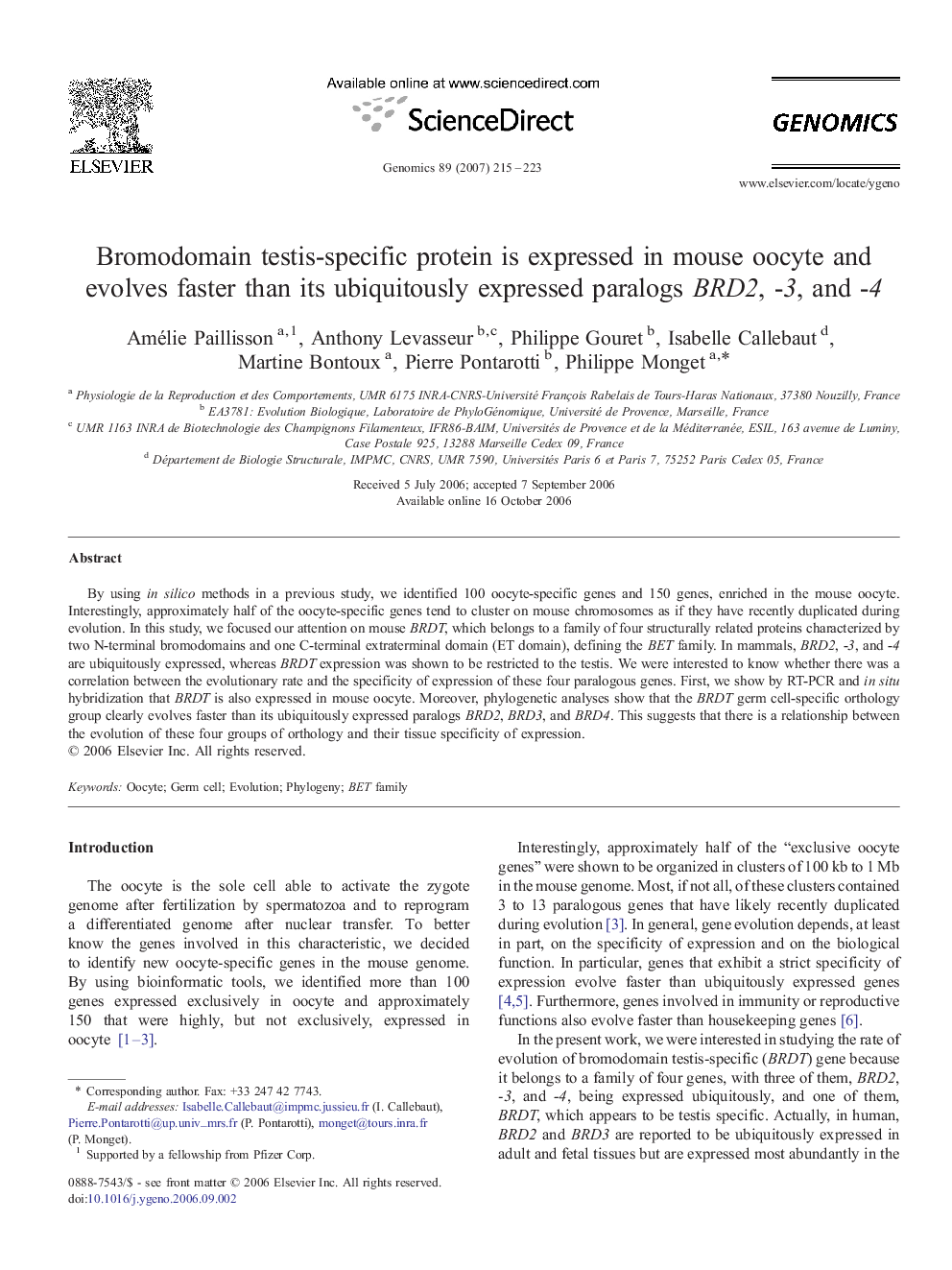| Article ID | Journal | Published Year | Pages | File Type |
|---|---|---|---|---|
| 2821707 | Genomics | 2007 | 9 Pages |
By using in silico methods in a previous study, we identified 100 oocyte-specific genes and 150 genes, enriched in the mouse oocyte. Interestingly, approximately half of the oocyte-specific genes tend to cluster on mouse chromosomes as if they have recently duplicated during evolution. In this study, we focused our attention on mouse BRDT, which belongs to a family of four structurally related proteins characterized by two N-terminal bromodomains and one C-terminal extraterminal domain (ET domain), defining the BET family. In mammals, BRD2, -3, and -4 are ubiquitously expressed, whereas BRDT expression was shown to be restricted to the testis. We were interested to know whether there was a correlation between the evolutionary rate and the specificity of expression of these four paralogous genes. First, we show by RT-PCR and in situ hybridization that BRDT is also expressed in mouse oocyte. Moreover, phylogenetic analyses show that the BRDT germ cell-specific orthology group clearly evolves faster than its ubiquitously expressed paralogs BRD2, BRD3, and BRD4. This suggests that there is a relationship between the evolution of these four groups of orthology and their tissue specificity of expression.
